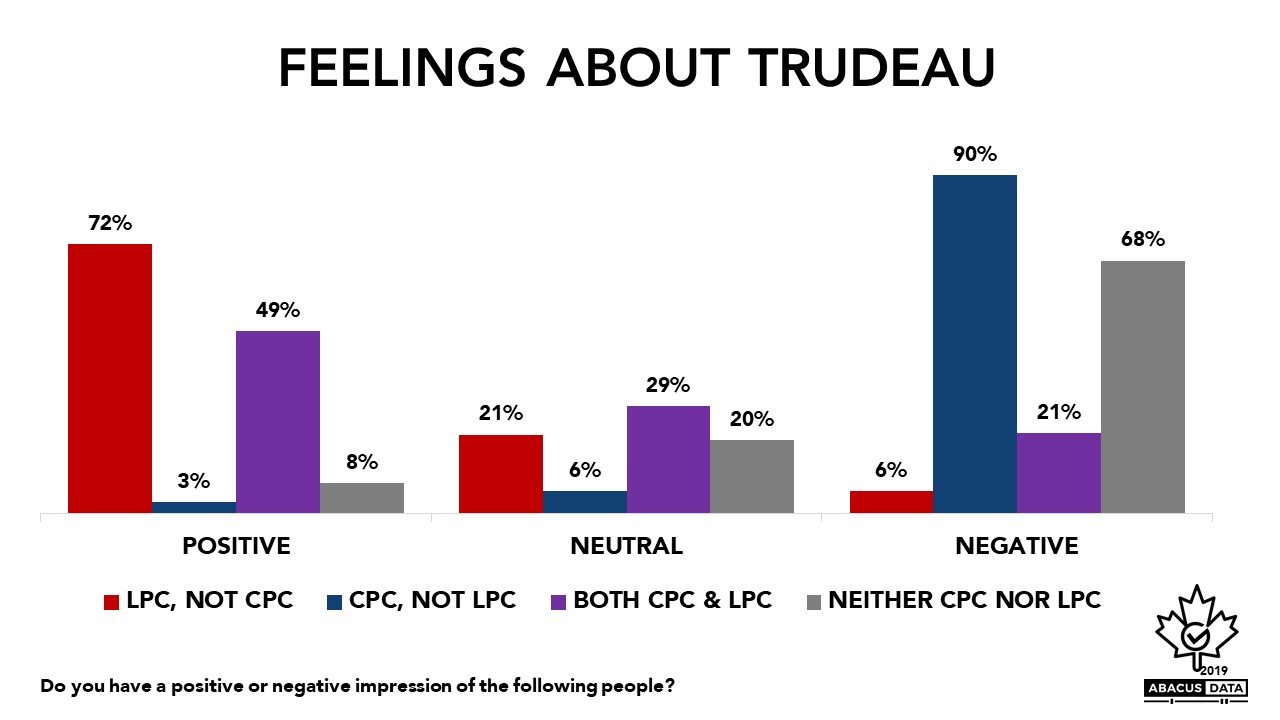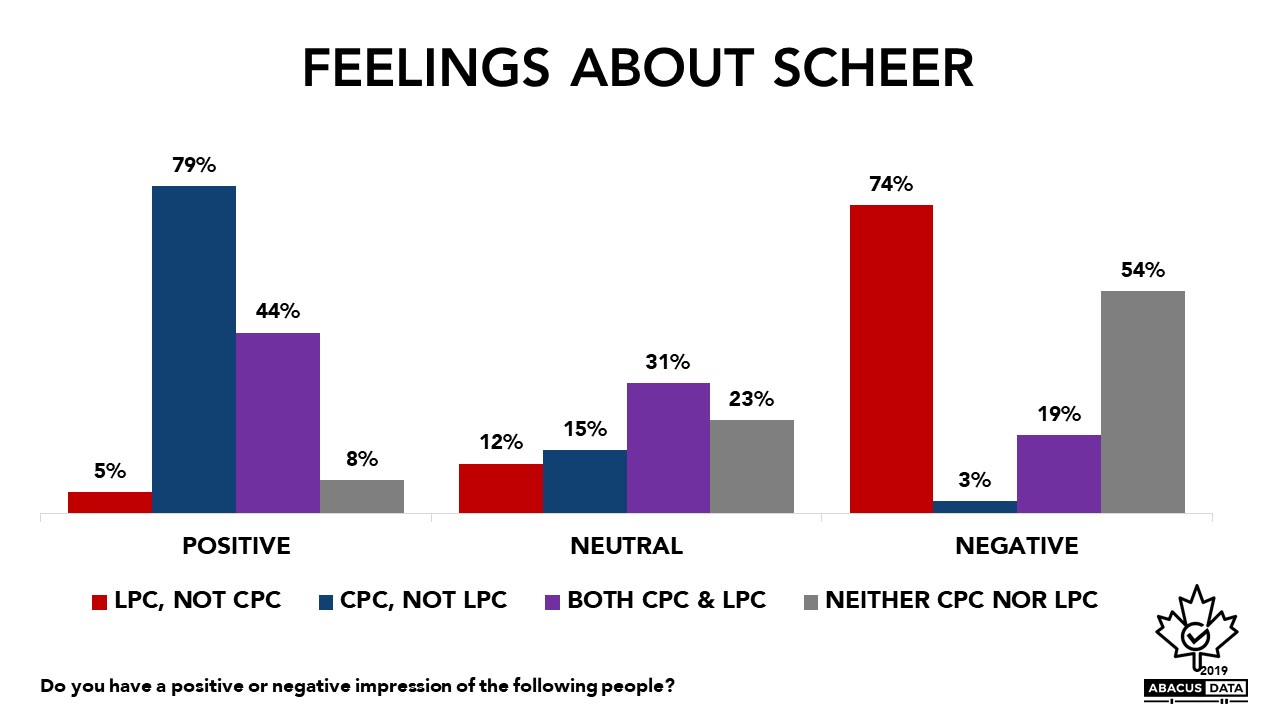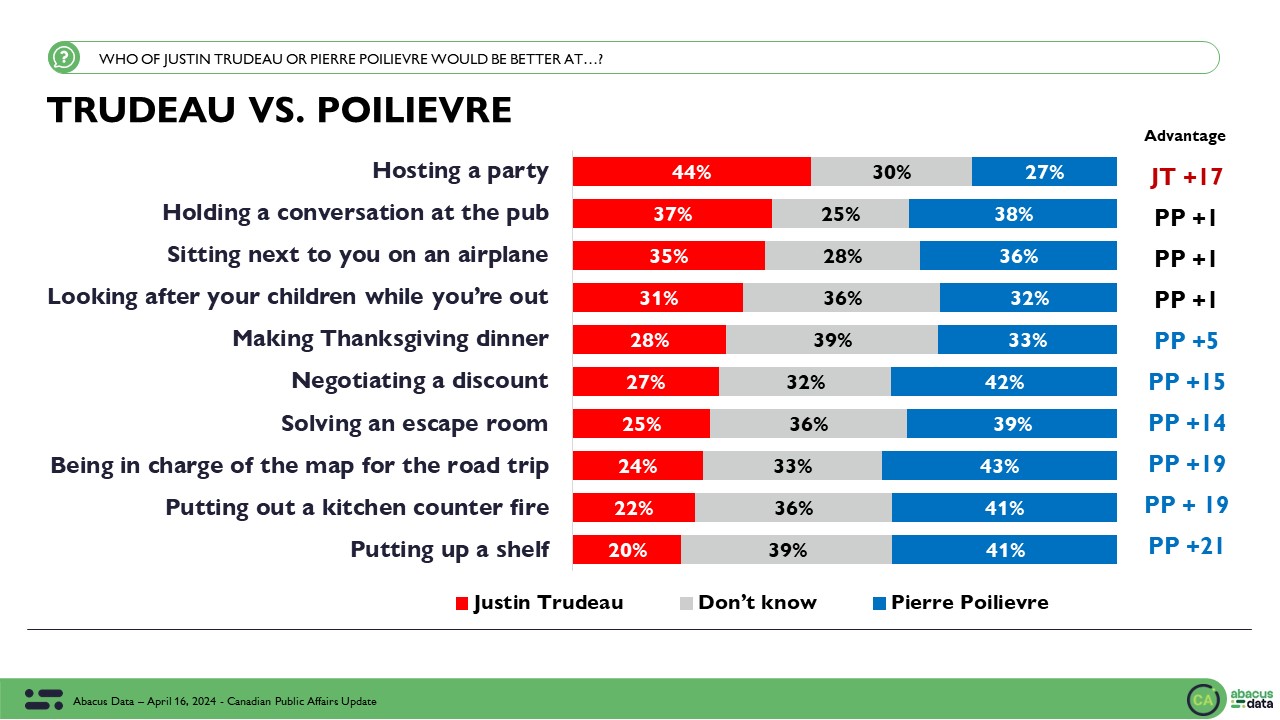Introducing the 19% of voters who could decide this election
September 15, 2019
In Abacus Data’s last political update, I noted that we should not assume that NDP or Green Party voters will vote strategically for the Liberals if it appears the Conservatives and Andrew Scheer appear likely to win the election.
To explore this idea in more depth, I returned to the dataset to see what else we can learn from our latest survey. Specifically, I used responses to our vote consideration questions to create four distinct voter segments: those who would consider voting Liberal but not Conservative (32% of the electorate), those who would consider voting Conservative, but not Liberal (30% of the electorate), those open to voting for both the Liberals and Conservatives (19% of the electorate), and those who would not consider voting for either (19% of the electorate).

The Liberals and Conservatives have access to half the electorate, but only a portion of it overlaps. Both have accessible voter pools sufficiently large enough to win the election but if we assume the parties need about 37% to 40% of the vote to win a majority, they will need to convert about 3 in 4 of their accessible voters to pull this off. This framing of the electorate also shows that about 1 in 5 potential voters is out of bounds to both parties.
When we look at how each of these groups would vote at the time of the survey, 84% of the Conservative, not Liberal group would vote Conservative. 8% would go NDP while 7% would split between the Greens, People’s Party and BQ. 75% of the Liberal, not Conservative group would vote Liberal with 15% voting NDP and 8% voting Green. 2% would split between the People’s Party and BQ. Among the group who would consider both the Liberals and Conservatives, the Liberals have a slight lead, 43% to 37% over the Conservatives. Another 9% would vote NDP, 7% Green, and 3% to other parties.

Based on this, what are some paths to victory for the Conservatives and Liberals? Let’s control for voter turnout as it’s a variable harder to estimate right now (although a really important one). I will also assume that those not open to voting either the Liberals or Conservatives will stay that way. They will either vote for another party or not vote at all (they are the least likely to say they will vote of the four groups).
A Conservative Path to Victory
Let’s assume that the Conservatives convert the 84% of those who would consider voting Conservative, but not Liberal as our poll says they have now. In order to win at least 37% of the popular vote, they would have to win about half of those open to voting for both the Liberals and Conservatives, 13-points more than they have now.
The challenge for the Conservatives in doing this is that only 25% of this group believe the country is headed off on the wrong track, only 33% definitely want a change in government, and 21% have a negative impression of Mr. Trudeau. Only 19% have a negative of Mr. Scheer but 31% have a neutral view meaning their view of the Conservative Leader can be shaped either positively or negatively. Unless the campaign shifts these views, this may difficult to achieve.
A Liberal Path to Victory
Let’s assume that the Liberals convert the 75% of those who would consider voting Liberal, but not Liberal as our poll says they have now. In order to win at least 37% of the popular vote (although they might be able to win a majority with less than this), they would have to win about two thirds of the group open to both parties, or 23-points more of this group.
This is a tall order for sure, but not impossible. Among this group, 61% think the country is headed in the right direction (another 14% aren’t sure), 79% have either a positive or neutral impression of Mr. Trudeau, and only 24% would react negatively to a Liberal majority. All these numbers suggest it’s possible. The challenge for the Liberals is that 76% of this group would prefer a change in government (33% definitely want change while 43% think change would be good but it’s not important).
So the Liberal campaign needs to convince these voters that they have accomplished a lot, deserve to be re-elected and convert the general positive mood and good will towards Trudeau into votes.
The Upshot
These two scenarios demonstrate that both parties can win this election. But my sense is that the Liberals likely have the easier path than the Conservatives. Even if 1 in 5 voters vote for neither the Liberals nor Conservatives, there are enough left for both parties to win. Focusing on those swing voters that straddle their two universes is what the 2019 election will be about for both the Liberals and Conservatives.
Supporting Data Charts






METHODOLOGY
Our survey was conducted online with 2,000 Canadians aged 18 and over from September 6 to 10, 2019 . A random sample of panellists was invited to complete the survey from a set of partner panels based on the Lucid exchange platform. These partners are double opt-in survey panels, blended to manage out potential skews in the data from a single source.
The margin of error for a comparable probability-based random sample of the same size is +/- 2.2%, 19 times out of 20. The data were weighted according to census data to ensure that the sample matched Canada’s population according to age, gender, educational attainment, and region. Totals may not add up to 100 due to rounding.
ABOUT ABACUS DATA
We are the only research and strategy firm that helps organizations respond to the disruptive risks and opportunities in a world where demographics and technology are changing more quickly than ever.
We are an innovative, fast-growing public opinion and marketing research consultancy. We use the latest technology, sound science, and deep experience to generate top-flight research-based advice to our clients. We offer global research capacity with a strong focus on customer service, attention to detail and exceptional value.
Contact us with any questions.
Find out more about how we can help your organization by downloading our corporate profile and service offering.



